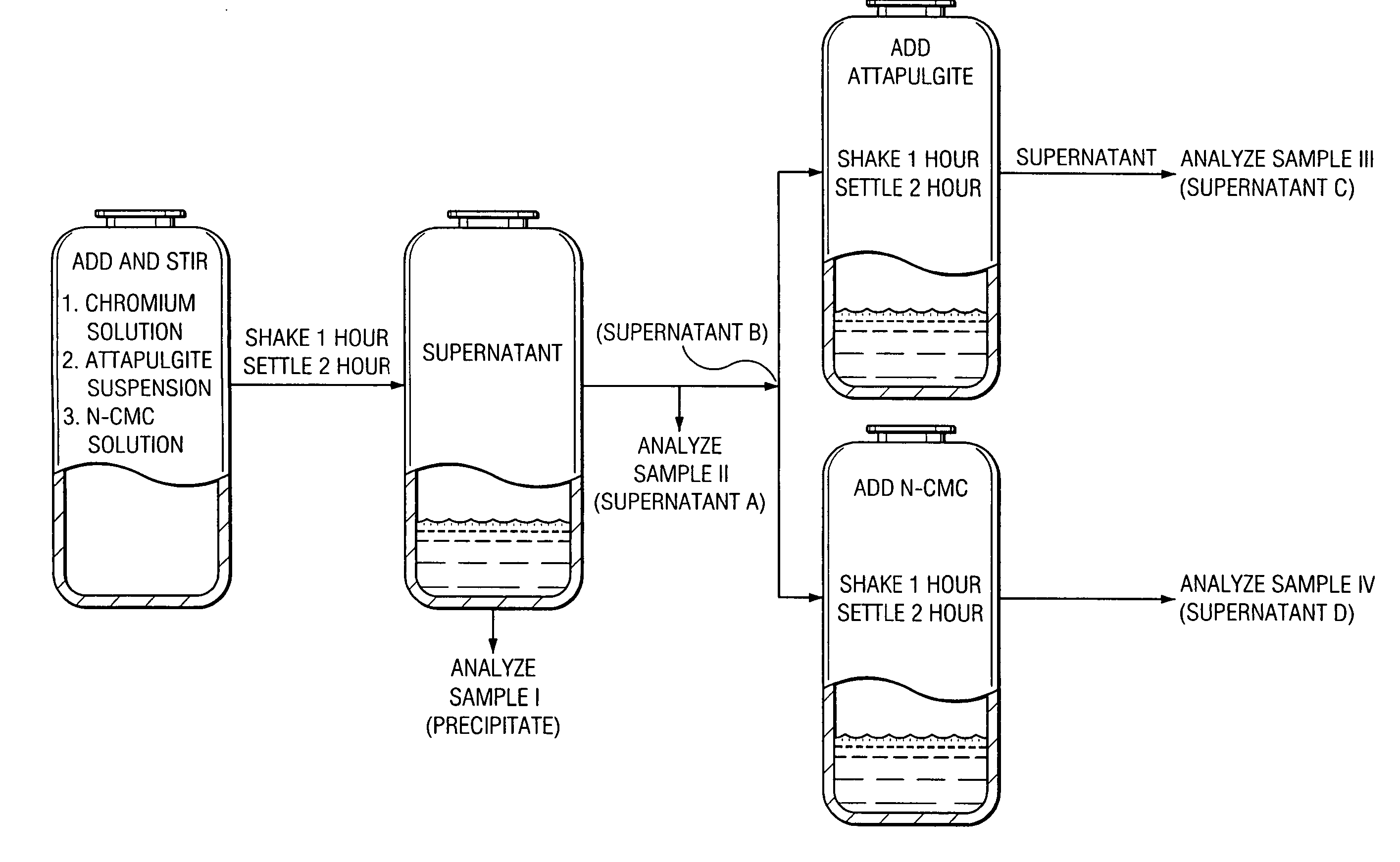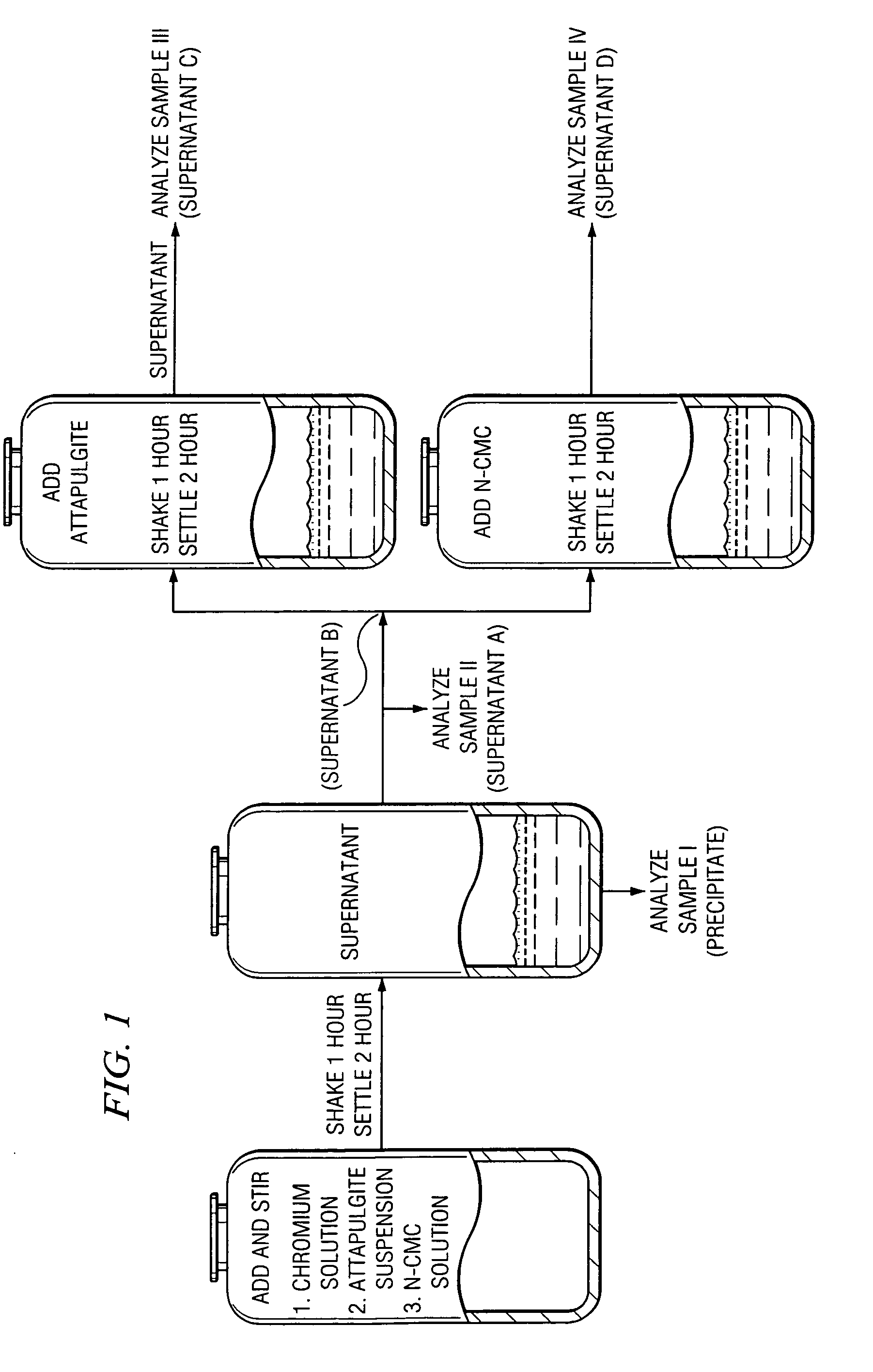Compositions and methods for removal of toxic metals and radionuclides
- Summary
- Abstract
- Description
- Claims
- Application Information
AI Technical Summary
Benefits of technology
Problems solved by technology
Method used
Image
Examples
example 1
Removal of Toxic Metals by Chitosan and Attapulgite
[0033] Both natural attapulgite (Attagel®, Engelhard Corporation, New Jersey) and 70% deacetylated native chitosan or NCMC were used alone or in combination to flocculate chromium (Cr2+) , lead (Pb2+), copper (Cu2+), and zinc (Zn2+) contained in sludge material at different pHs (3.5 and 7.0). Water contaminated with chromium at different concentrations (0.50, 0.26, and 0.16 mg / l) was also treated with colloidal attapulgite or chitosan alone or in combination at different concentrations (attapulgite concentrations: 0.12%, 0.25%, and 0.65% (attapulgite / water; chitosan stock concentrations: 0.12%, 0.25%, 0.50% (w / v)). Concentrations of attapulgite stock solutions that were effective in the present invention include aqueous solutions of above 0.001% to about 2%, preferably about 0.01%, and more preferably about 0.1% (weight / volume). Attagel slurry solutions are used in the present example, but highly cationic bentonite clays are expect...
example 2
Removal of Radionuclides or Toxic Metals by Volcanic Ash With or Without Chitosan
[0047] Both weathered volcanic ash (JSC MARS-1) and 70% deacetylated native chitosan were used alone or in combination to remove uranium radionuclides from a 2% solution of uranium acetate. Chitosan solutions were prepared in acetic acid. The final pH of the mixture was adjusted to 3.5. Duplicate 100 mL samples were treated with chitosan (10 mL) or volcanic ash (20 g) alone or in combination. Amber brown bottles were used to protect against light effects. The samples were incubated at room temperature (25° C.) for 48 hours without shaking.
[0048] After incubation acid digestion was carried out according to Standard Methods for the Examination of Water and Waste Water, 19 Ed. (1995) (American Public Health Association, American Water Works Association, Water Environment Federation) using the Inductively Coupled Plasma (ICP) Method (3120 B) adapted for uranium analysis with the following specifications: ...
PUM
| Property | Measurement | Unit |
|---|---|---|
| Fraction | aaaaa | aaaaa |
| Fraction | aaaaa | aaaaa |
| Fraction | aaaaa | aaaaa |
Abstract
Description
Claims
Application Information
 Login to View More
Login to View More - R&D
- Intellectual Property
- Life Sciences
- Materials
- Tech Scout
- Unparalleled Data Quality
- Higher Quality Content
- 60% Fewer Hallucinations
Browse by: Latest US Patents, China's latest patents, Technical Efficacy Thesaurus, Application Domain, Technology Topic, Popular Technical Reports.
© 2025 PatSnap. All rights reserved.Legal|Privacy policy|Modern Slavery Act Transparency Statement|Sitemap|About US| Contact US: help@patsnap.com



